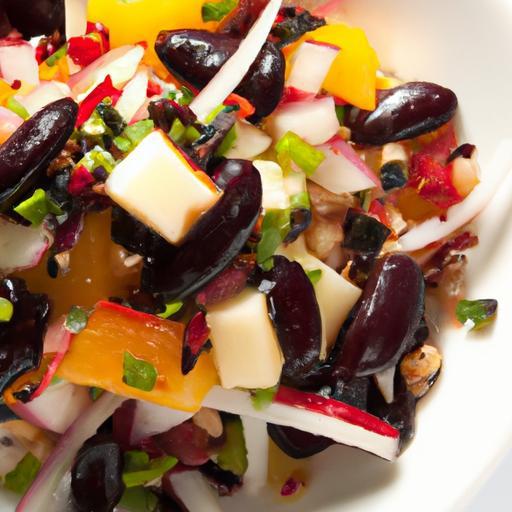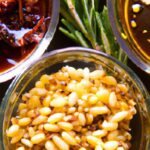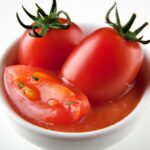There’s something magical about relish-a burst of tangy, sweet, and savory flavors that elevate your favorite dishes from ordinary to unforgettable. But nothing spoils that experience faster than a watery, runny relish that dribbles and dilutes every bite. If you’ve ever found yourself wishing for a firmer, thicker relish that holds its shape and flavor with every spoonful, you’re not alone. In this article, we’ll unlock the secrets to transforming your watery relish into a perfectly thickened condiment masterpiece. From clever kitchen hacks to time-tested techniques, get ready to savor a relish that clings delectably to your plate-and your palate.
How to Thicken Relish: Secrets to a Less Watery Bite begins with selecting the perfect balance of ingredients that bring both body and burst of flavor to your creation. Whether you prefer tangy cucumber, ruby-red tomatoes, or vibrant peppers, the choice of fresher, firmer vegetables dramatically reduces excess moisture and sets the stage for a luscious, heartier texture. Mastering natural thickeners then elevates the relish from runny to rich, while thoughtful cooking techniques gently coax away unwanted water without sacrificing brightness or bite.
Prep and Cook Time
Preparation: 15 minutes
Cooking: 25 minutes
Total: 40 minutes
Yield
Yields approximately 2 cups (about 8 servings)
Difficulty Level
Easy to Medium – ideal for home cooks ready to explore texture mastery
Ingredients
- 2 cups finely chopped cucumbers, seeds removed for less moisture
- 1 cup diced red bell pepper, firm and fresh
- 1/2 cup finely chopped onion, preferably sweet variety
- 1/4 cup apple cider vinegar for tang and preservation
- 2 tablespoons maple syrup or honey, natural sweetener
- 3 tablespoons cornstarch dissolved in 1/4 cup cold water (natural thickener)
- 1 tablespoon tomato paste, optional but adds body and depth
- 1 teaspoon mustard seeds for aromatic crunch
- 1/2 teaspoon freshly ground black pepper
- 1 teaspoon sea salt
- 1 tablespoon olive oil for sautéing
- Fresh herbs like dill or parsley finely chopped, for garnish
Instructions
- Prepare your vegetables: Start by finely chopping cucumbers, carefully removing seeds to reduce water content. Dice the bell pepper and onion uniformly for even cooking.
- Sauté the aromatics: In a medium saucepan, heat olive oil over medium heat. Add mustard seeds and sauté until they pop, about 1 minute. Add onions and cook until translucent, approximately 5 minutes, stirring frequently.
- Combine main ingredients: Add the cucumbers and bell peppers to the saucepan. Stir well and cook for another 5 minutes to release some moisture and soften the veggies without turning mushy.
- Incorporate flavor and acidity: Stir in apple cider vinegar, tomato paste (if using), maple syrup, salt, and pepper. Cook for 3-4 minutes, allowing flavors to meld and excess water to begin evaporating.
- Thicken naturally: Slowly pour the cornstarch slurry into the mixture while stirring constantly. Continue cooking for an additional 3-4 minutes until the relish thickens noticeably, exhibiting a glossy sheen and spoon-coating consistency.
- Final checks: Taste and adjust seasoning. If the relish is too thick, add a tablespoon of water and gently reheat. If still watery, simmer a bit longer, stirring often.
- Cool and garnish: Remove from heat and let cool slightly before stirring in fresh herbs. This final touch elevates the freshness and visual appeal.
Tips for Success
- Choose ingredients with low water content: Firm, ripe vegetables reduce excess liquid naturally.
- Cook low and slow: Gentle evaporation is key; high heat can cause burning or uneven thickening.
- Thickeners beyond cornstarch: Try arrowroot powder or ground flaxseed for alternative natural thickeners.
- Remove excess liquid: After chopping, let veggies drain in a fine mesh sieve or lightly salt to draw out moisture before cooking.
- Make ahead: Relish thickens further once chilled. Store in airtight jars and refrigerate for up to two weeks.
Serving Suggestions
Serve this perfectly thickened relish atop freshly grilled meats, alongside crispy fries, or as a vibrant condiment on sandwiches and burgers. Garnish with a sprinkle of bright chopped dill or parsley and a drizzle of olive oil to add a layer of freshness and gloss. It also pairs beautifully with creamy cheeses and crunchy crackers for effortless entertaining.
| Nutrient | Per Serving (2 tbsp) |
|---|---|
| Calories | 25 |
| Protein | 0.5 g |
| Carbohydrates | 6 g |
| Fat | 0.4 g |
For more creative condiment ideas that complement your thickened relish, see our complete guide to homemade condiments. Enhance texture knowledge further at Cook’s Illustrated on Thickening Sauces.

Q&A
Q&A: How to Thicken Relish – Secrets to a Less Watery Bite
Q1: Why does my relish turn out watery?
A: Relish often turns watery because of the natural moisture content in fresh vegetables and fruits used. When chopped finely or combined with acidic ingredients like vinegar, the water separates and creates a thin, runny texture that can be disappointing for those craving that perfect balance of crunch and zest.
Q2: What’s the best way to thicken relish without losing its fresh flavor?
A: One of the gentlest methods is to drain excess liquid by gently pressing the relish with a fine sieve or cheesecloth. This removes some water without cooking away freshness. Alternatively, adding a teaspoon or two of natural thickening agents like ground chia seeds or crushed gelatin flakes can absorb moisture and add body-without overpowering the taste.
Q3: Can cooking help thicken my relish?
A: Absolutely! Simmering your relish over low heat allows some of the liquid to evaporate, concentrating flavors and thickening the texture naturally. Just be careful not to overcook, as prolonged heat can soften crisp veggies too much, turning your relish mushy rather than chunky.
Q4: Are there any pantry staples that double as thickening agents for relish?
A: Yes! Common kitchen heroes like corn starch, arrowroot powder, or even instant mashed potato flakes can thicken relish quickly. Mix a small amount with a bit of cold water before adding to your relish, then gently heat and stir until it thickens. These starches won’t alter the flavor dramatically but can firm up a watery batch.
Q5: Does chilling help thicken relish?
A: Chilling won’t remove liquid but can help thicken the relish’s texture as ingredients settle and flavors meld. For relishes that have added natural thickeners like gelatin or chia seeds, refrigeration transforms them into a pleasantly thick and cohesive bite.
Q6: How can I prevent relish from getting watery in the first place?
A: Start with firm, fresh produce and avoid over-macerating (letting the veggies sit too long in salt or vinegar). Salt draws out water, so rinse salted veggies before mixing if your recipe calls for it. Also, consider adding thicker vegetables or pickles with low moisture content to balance juicier ones.
Q7: Any creative tips for thickening sweet relishes?
A: For fruity or sweet relishes, try adding mashed banana or a spoonful of fruit preserves to boost body naturally. Adding natural pectin sources, like grated apple skins or citrus peels, can also contribute gentle thickening while complementing the overall flavor.
Q8: What’s the secret “chef’s trick” to perfect relish texture?
A: The magic often lies in layering techniques: drain excess juice first, gently cook to concentrate flavors, then finish with a small amount of thickener like chia seeds or gelatin-followed by a good chill. This tri-step approach balances freshness, texture, and bite for relish that’s satisfyingly thick without being gloopy.
Use these simple secrets to transform your watery relish into a thick, flavorful condiment that contrasts beautifully with your burgers, hot dogs, or cheese platters. Say goodbye to the watery woes and hello to a relish bursting with texture and zing!
To Conclude
In the quest for the perfect relish, achieving that ideal, thickened texture transforms every bite from merely flavorful to truly memorable. By understanding the science behind moisture and experimenting with natural thickeners, you unlock the secret to a relish that clings lovingly to your favorite dishes without the watery mess. Whether you prefer the gentle reduction method, a dash of pectin magic, or the humble power of chia seeds, these simple tweaks elevate your relish from runny to robust. So next time you’re crafting your signature relish, remember: a thicker bite isn’t just about consistency-it’s where flavor and texture unite to make every mouthful sing. Happy thickening!


